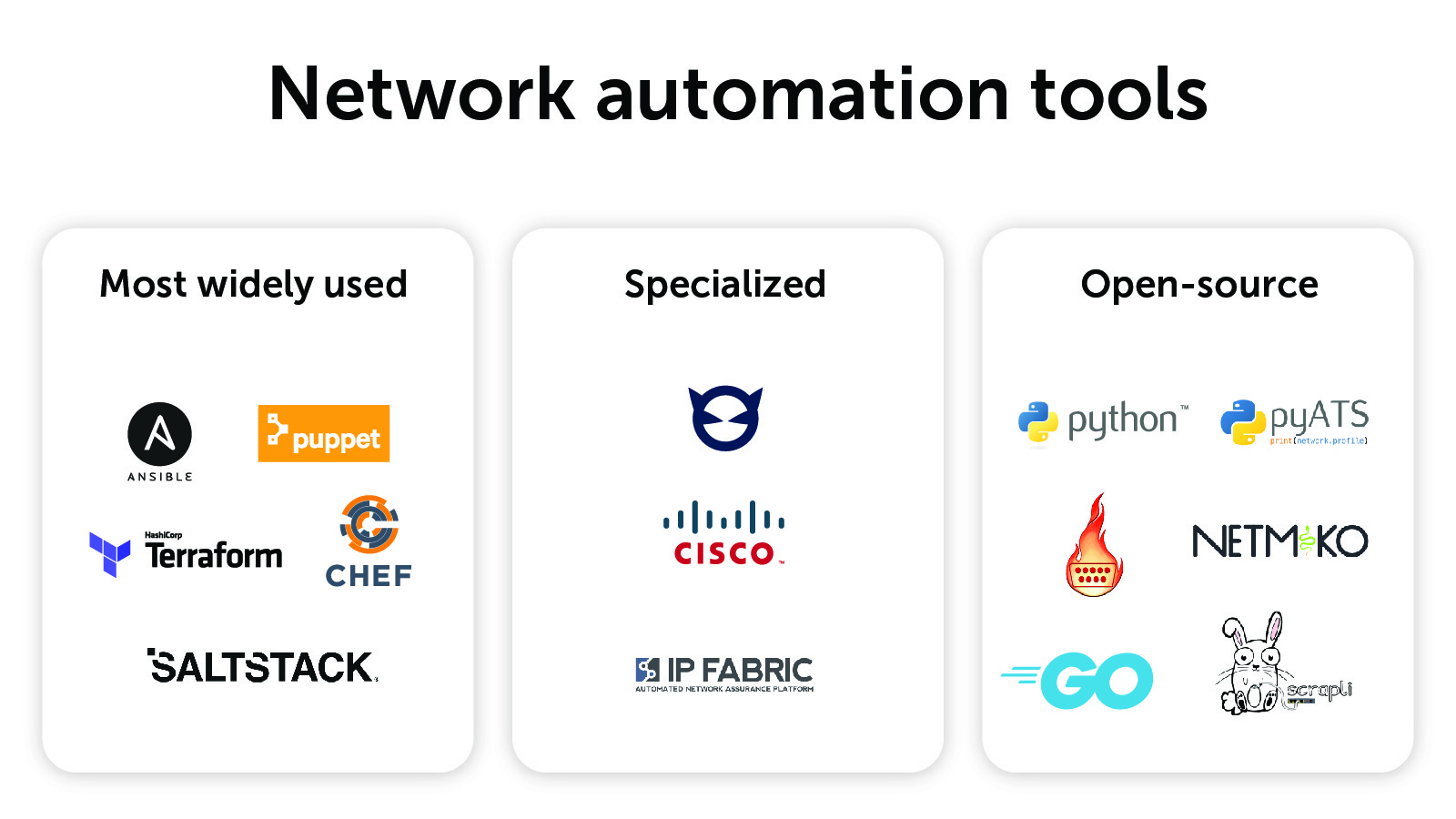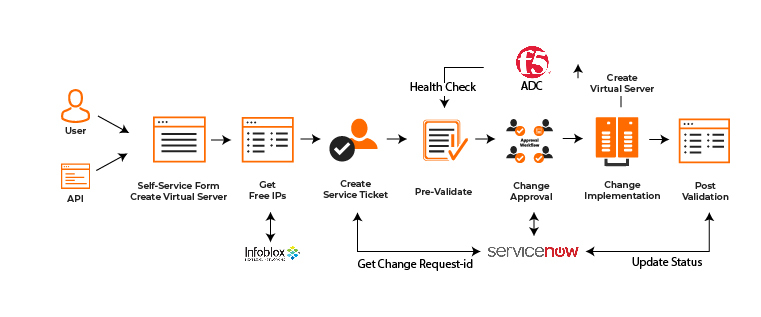Network automation tools are becoming increasingly important for businesses to stay competitive in today’s digital age. Network automation is the process of automating the management, configuration, and operation of a network infrastructure. This involves using software-based tools and scripts that can automate a variety of tasks such as provisioning and configuring network components, troubleshooting network issues, performing maintenance operations, validating configurations, and reporting on network performance.
The use of network automation tools can help reduce human errors, improve scalability, and increase resilience while also reducing the workload for IT staff. Script-driven network automation is one way to achieve these goals by utilizing scripting and programming languages to execute tasks with consistent procedures. Software-based network automation is another option that uses existing software applications to manage networks. Finally, intent-based network automation leverages abstracted models to understand user intent in order to better provision and configure networks.
Python has emerged as a popular language for network automation due to its ease of use along with many useful code samples and utilities. Furthermore, Python integrates well with other languages such as Java or JavaScript making it well-suited for developing complex solutions or integrating with existing systems.
In addition to these benefits of using Python for network automation, there are also other advantages associated with automating networks, in general, such as improved security through automated audits and patching as well as improved visibility into an organization’s entire infrastructure which can help identify potential threats before they become problems. Automation also helps streamline processes by eliminating manual steps which improves efficiency while reducing costs associated with labor-intensive tasks.
Overall, the use of automated tools for managing networks has become an invaluable resource for businesses looking to remain competitive in the digital age while also providing numerous benefits such as increased security and improved visibility into their infrastructure. With the right tools in place, businesses can save time, money, and effort and reduce risk while achieving greater control over their networks than ever before.

The Benefits of Using a Network Automation Tool
Network automation tools are software applications that enable network administrators and engineers to automate the management of network devices and services. These tools allow users to quickly and efficiently configure, deploy, monitor and maintain their networks. They can also be used to automate common tasks such as adding new users and devices, creating backups, configuring security policies, and troubleshooting issues. Network automation tools typically provide a graphical user interface (GUI) to manage the network with drag-and-drop functionality and point-and-click features. This eliminates the need for manual configuration of devices or services, reducing the amount of time needed for network maintenance. Network automation tools also allow for faster response times when troubleshooting network issues or making changes to the network configuration. Additionally, many network automation tools have analytics capabilities that enable deeper insights into the performance of the network over time.
Types of Network Automation
Network automation is the process of using software to configure, manage and monitor network devices like routers, switches, and firewalls. There are three main types of network automation: script-driven, software-based, and intent-based.
Script-driven network automation uses scripting and programming languages to execute tasks with precise triggers and consistent procedures. This is typically done through pre-defined scripts which can be used for automating repetitive tasks on the network such as creating or deleting users, configuring devices, or running diagnostics.
Software-based network automation involves using applications designed specifically for automating certain tasks in a given network environment. These applications may provide more granular control over the network and can be used for automated provisioning, configuration management, or monitoring of devices.
Finally, intent-based network automation is a type of automation that uses higher-level statements to describe what should happen in a given network environment. This allows users to define the desired state of their networks rather than having to manually configure each device individually. This type of automation helps reduce the amount of time needed to configure networks while also providing more flexibility in terms of how they can be configured.
The Benefits of Python Network Automation
Python network automation is the use of software scripts written in Python to automate the configuration, management, and monitoring of network devices. This type of automation allows network engineers to quickly provision new devices, manage changes in existing networks, and troubleshoot issues with minimal manual intervention. Python can be used to communicate with a wide variety of network devices, including routers, switches, and firewalls. Additionally, Python can be used to interact with applications that manage device configurations such as Ansible or Puppet. By leveraging Python’s easy-to-learn syntax and extensive libraries for networking tasks, network engineers can create powerful automated solutions that are both reliable and efficient.
The Benefits of Network Automation
Network automation is a powerful tool used to help organizations streamline their processes and reduce the amount of manual labor required for network operations. The primary uses of network automation are to automate repetitive tasks, secure network configurations, ensure compliance with policies and regulations, and reduce the risk of human error.
Automation can help reduce tedious manual work by automating common tasks such as configuration changes, software patching, and data backups. Automation also helps to standardize processes across different networks, ensuring that all systems are configured in the same way. This helps to improve security by ensuring that all systems have the same baseline configurations, reducing potential attack surfaces. Automation can also be used to ensure that configurations comply with organizational policies or external regulations such as PCI-DSS or HIPAA.
Finally, automation can help to improve scalability and resilience by providing greater flexibility in responding quickly to changes in demand or environment. By reducing manual intervention and human error, automation helps to ensure that any changes are made consistently and reliably across networks. Automation can also help to identify potential issues or problems before they become severe enough to cause outages or service disruptions.

Getting Started with Network Automation
To start learning network automation, it is important to have a good understanding of soft skills such as communication, problem-solving, and collaboration. You should also become familiar with scripting languages such as Python and PowerShell to create useful automation systems. Additionally, having knowledge of software concepts and development skills will help you become more efficient in creating automated networks.
It may also be beneficial to start by automating simple tasks such as backing up configuration files or creating small scripts that can execute repetitive commands on multiple devices. This will give you a better understanding of the process and allow you to gradually increase the complexity of your scripts.
Finally, it is important to stay up-to-date with new technologies and trends in the network automation space; reading blogs, and attending online courses or seminars are all great ways to stay ahead of the curve.
The Benefits of Network Automation in CCNA
Network automation in CCNA is the process of using software to automate network and security provisioning and management. This automation helps to maximize network efficiency and functionality, while also reducing manual labor and costs associated with configuring, managing, and troubleshooting networks. Network automation can be used to enable efficient change management, reduce errors caused by manual configuration, and improve the speed of new service deployments. Automation can also help to ensure that configurations are consistent across multiple devices, ensuring greater reliability of the network. Additionally, it can streamline auditing processes by providing a single source of truth for all network elements. Network automation is often used in conjunction with network virtualization which enables organizations to easily create virtual networks that are more flexible and cost-effective than traditional physical networks.
Network Automation: How Is It Done?
Network automation is achieved by leveraging a variety of tools and technologies, including scripting languages, software-defined networking (SDN) platforms, and automation frameworks. Scripting languages such as Python and Puppet can be used to write scripts that automate network operations tasks, such as provisioning new devices or configuring security policies. SDN platforms provide an abstraction layer for managing the underlying network infrastructure and can be used to automate the configuration of various devices. Finally, automation frameworks such as Ansible and Chef provide a set of tools for developing automated workflows that automate complex network operations tasks. These workflows can include activities like deploying new services, managing network security policies or integrating new applications into existing networks. All of these technologies enable NetOps teams to quickly deploy and manage their networks more efficiently than ever before.
Conclusion
In conclusion, network automation tools are essential for optimizing network operations and improving performance. These tools enable organizations to automate provisioning/configuration, troubleshooting, operations/maintenance, validation, and reporting of network components. Script-driven, software-based, and intent-based network automation are the three main types of automation tools. The benefits of using these tools include reducing the workload for IT staff, removing the risk of human error, and standardizing processes. By automating repetitive tasks in a consistent manner, networks can become more resilient and better able to scale with changing needs.








